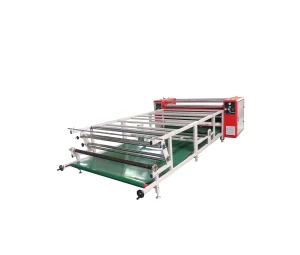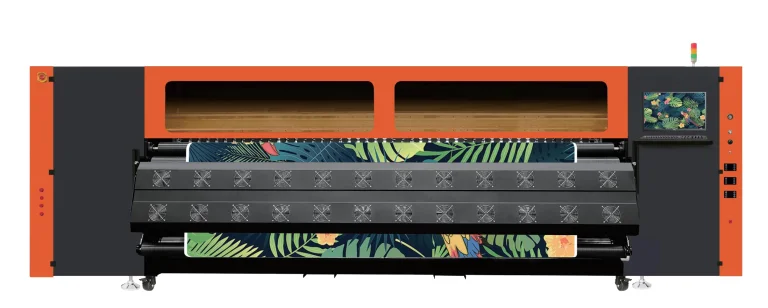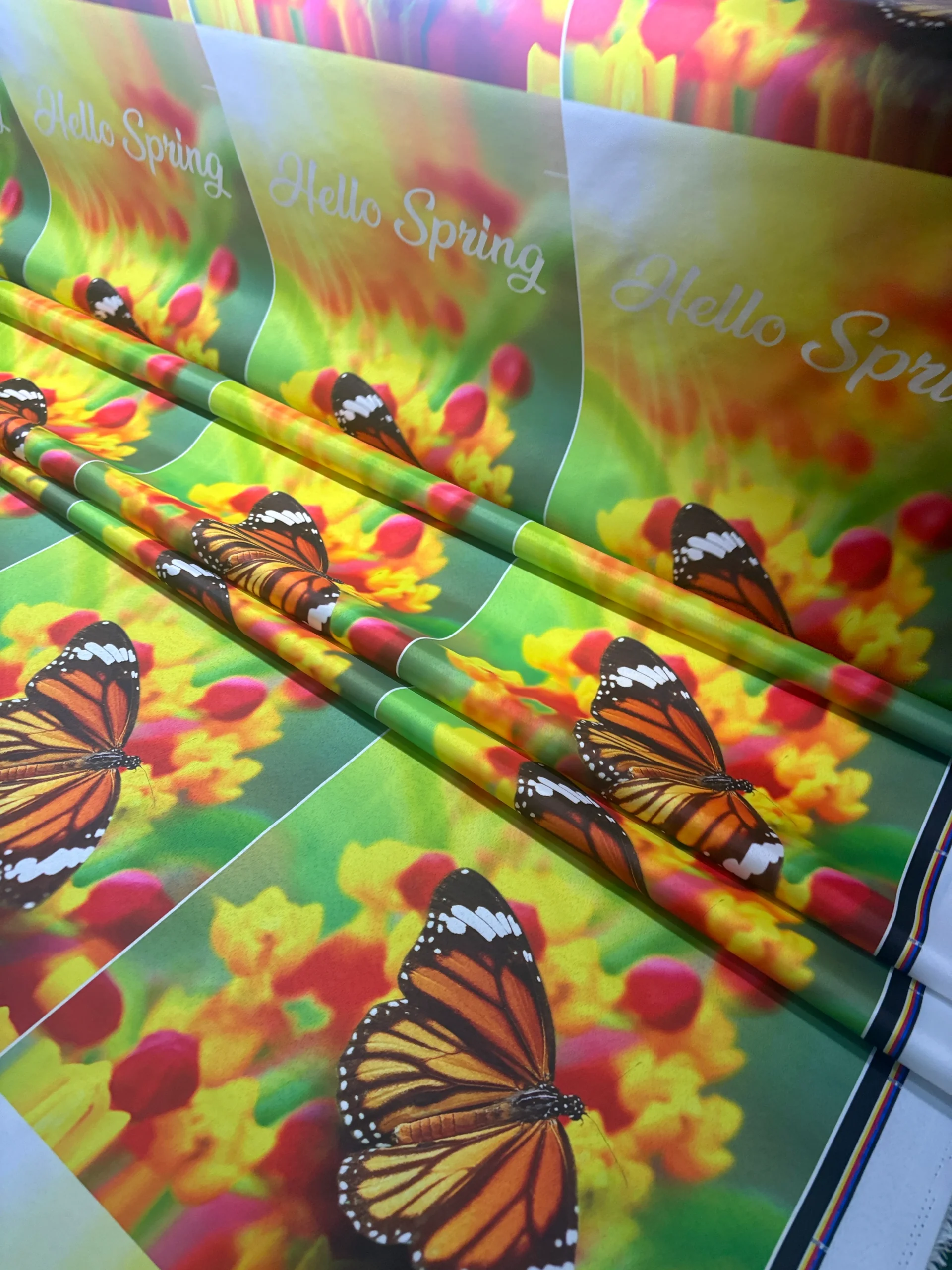

Picture this. You own a little shop that makes custom T-shirts. Or maybe you design banners for neighborhood parties. You need colors that grab attention. They should survive many washes. And they must stay eye-catching without losing their shine. Digital Sublimation printing makes that possible. This technique uses heat to push dye right into stuff like polyester cloth or painted ceramics. The result? Pictures that seem built into the surface. They don’t crack. They don’t flake off. Just bright, tough outcomes that endure.
You may ask yourself how this beats regular inkjet or screen methods. Well, the dyes turn to gas here. They stick deep into the stuff at a tiny level. So, shades keep their edge. Even after heavy use, like 50 times or more. It’s great for clothes, coffee cups, or event signs. Shops grow from kitchen tables to big plants with this. And it cuts down on time and mess.
I’ve helped tons of makers set up their print spots over the years. Let me give you a quick pointer. Team up this method with solid tools. That way, you hit your groove right away. Consider HOLDWIN. They stand out in this area. Their gear mixes quick work, sharp aim, and simple use. So, you can stick to your ideas. Not deal with breakdowns. For big jobs, the HOLDWIN 3200mm Sublimation Printer manages rolls up to 3.2 meters wide. It uses Epson heads that give clear 1440 dpi work. This fits banners or couch covers well. It shortens make time. And it keeps expenses down. If you just test the waters, their starter picks glow too. Like easy starts for one-of-a-kind presents. HOLDWIN builds with the user in mind. You learn fast without a big climb. Check their full range on the site. It’s like owning a top workshop at home. This stuff isn’t just talk. It’s your real boost in a busy field.
Let’s dig into the printer now. You’ll spot how every bit works as a team. That makes the whole thing click.

You begin with the main parts. What drives this job? The setup has an ink tank, a print nozzle, a pass-over sheet, and a warm press. Each one has its job. Together, they turn your computer picture into a print that lasts.
Ink leads the way. These are special mixes for sublimation. They come in cyan, magenta, yellow, and black. At normal temps, they stay hard. But when heat strikes, they puff into air. Then they grip the stuff tight. You fill pods that fit your daily needs. For steady runs, grab ones with smooth flow. That skips annoying changes in the middle.
The print nozzle comes next. It’s your exact tool. Tiny holes shoot ink drops onto the sheet. Software steers the picture. Hunt for piezo kinds. They shoot steady. They don’t clog up. Even on long hauls.
Skip the pass-over sheet at your risk. It has a cover that grabs ink without runs. This bridges to your end spot. Pick thick ones for clean borders.
Last, the warm press locks it in. It spreads firm push and heat. Often 180-220°C. To start the dye move.
These bits mesh well in fresh builds. Take starter units like the HOLDWIN-1803TX. It squeezes all this into a small box. You get Epson nozzles for crisp strokes. And a basic ink setup for cups or shirts. No headaches. It hooks right to the next bit. Like prepping your picture.

Set to go through it? You sketch, print, shift, and close out. Each part stacks on the one before. This path keeps it smooth. So, you make extra with less bother.
You launch in a program. Open apps like Photoshop. Or a special RIP tool. Tweak shades for pop. Sublimation loves strong tones. So, amp up the brightness if it looks flat. Flip your art. It reverses in the shift for correct view.
Set the detail sharp. At least 300 dpi. That grabs small bits. Match shades to the machine’s style. Bad fits make things pale. Save it as a top file. Like TIFF. To keep all parts.
This start wraps quick once you get it. It lays a firm ground. And it rolls into printing. No stops.
Feed the file to the machine now. It sprays ink on the sheet backward. It stacks shade coats. The gear slides side to side. Or rolls on for wide tasks. Keep an eye. Ink dries in a flash. Leaves a sticky top set for warm.
You guide the pace and clean here. Slow goes mean deep tones. Quick ones fit mass orders. Shoot for flat spread. To skip lines.
Big machines excel here. Ones with extra nozzles hit wide spots fast. Like 200 meters an hour on 3.2-meter rolls. You tackle party art or cloth lengths. No sweat. And it ties clean to the shift.
Now the big change. Put the printed sheet face down on your base. Say a plain shirt or tile. Slide in the warm press. Dial time to 45-60 seconds. Push solid but light.
Heat climbs. The dye airs out. It slips into the base’s holes. Cool it down. The grip holds. Your pic now sits inside the cloth. Pull the sheet off. Leftovers stay low with good mixes.
You try temps on test bits first. To hit steady. This needs spot-on work. But good presses turn it normal. It flows easy to the end.
Give it a break. Cool breeze sets the dye firm. Pull the sheet soft. Warm pulls go smoother. But full cool stops marks.
Check for slips. Then cut or fold as fits. Do a rinse check on cloth. To prove it holds. All set. Pack or price it.
This loop goes on easy. It grows with your calls. So, think why this beats the rest.
You get over just pics. You shape a path that earns back. Pace leads. Roll systems spit out lengths in hours. Not days. Shades hold real. They fight light or dryer spins.
Flex pulls you close. Jump from clothes to firm items on one gear. Little trash helps. Computer files skip remake screens.
Toughness nails it. Pics take 50+ rinses no shade drop. That grows steady sales. Green sides pile on. Water inks slash harsh stuff.
Starter units give fast cash for fun makers. You kick off tiny. Printing special cups for meets. Then stretch out. Bigger sets face plant loads. With tricks like auto-pull for perfect rolls.
Fix-ups stay basic. Wipe nozzles daily. Run clean runs weekly. Eye ink often. Full check every half year keeps it going.
Cash falls as make rises. You eye fresh ideas. Not patches.
To wrap, this gear lifts you to pro work. It fixes size, clean, and simple. Main gripes for fresh or old hands.
You got the whole view. From bits to done, Sublimation flips thoughts to real goods. It smooths your steps. Drops slips. Opens fresh spots.
Set to jump in? Pick a build that fits your beat. Hunt picks for your room and cash. Lots come with tips. To print first day.
For real touch help, ping us. Team does sets, fixes, and puzzle outs. Shoot mail to our website. Or swing by https://www.zhiyudgtech.com/contact-us. We shape your win tale.
Q: How long does a typical sublimation print job take?
A: From design to finish, small runs like a dozen T-shirts wrap in under an hour. Larger fabric rolls might span a full day, depending on width and detail.
Q: Can I use this process on cotton fabrics?
A: Pure cotton doesn’t bond well—stick to polyester blends over 50% for best results. Pre-treat cottons if needed, but synthetics yield sharper, longer-lasting prints.
Q: What maintenance do these printers need?
A: Wipe printheads daily, run cleaning cycles weekly, and check ink levels often. Full servicing every six months keeps them humming smoothly.

Zhiyu is passionate about good products, good services, and good prices to let consumers know that choosing us is the right choice! For partners and end customers, we will provide one-on-one considerate smart services and provide you with more high-quality procurement solutions.